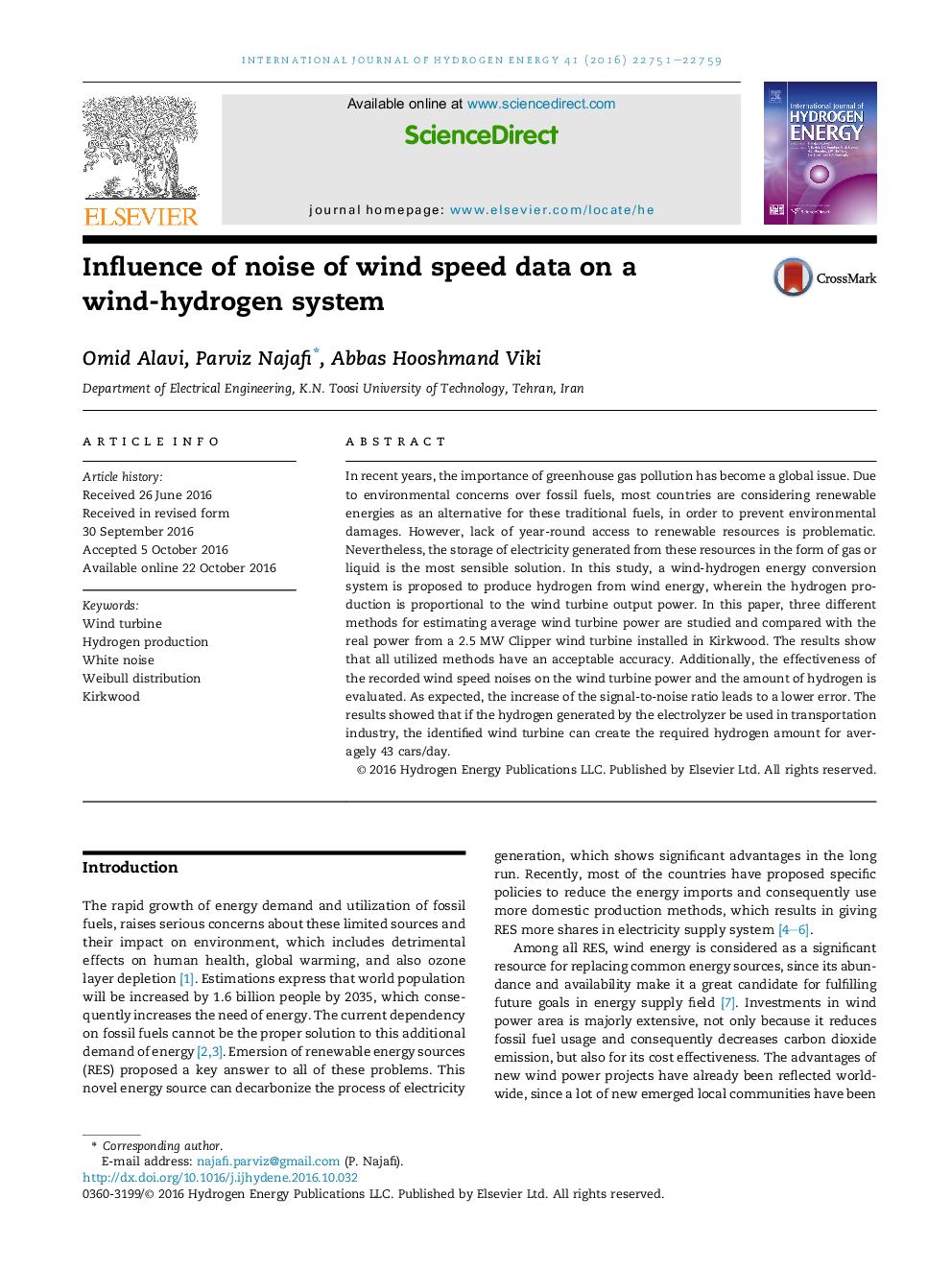| Article ID | Journal | Published Year | Pages | File Type |
|---|---|---|---|---|
| 5145796 | International Journal of Hydrogen Energy | 2016 | 9 Pages |
â¢The hydrogen production of a wind-hydrogen system is estimated using three methods.â¢The effect of noises of wind speed data on the predicted results is assessed.â¢The prediction methods include transient, histogram and Weibull methods.â¢The results show that the noise will have a dramatic impact on the Weibull function.
In recent years, the importance of greenhouse gas pollution has become a global issue. Due to environmental concerns over fossil fuels, most countries are considering renewable energies as an alternative for these traditional fuels, in order to prevent environmental damages. However, lack of year-round access to renewable resources is problematic. Nevertheless, the storage of electricity generated from these resources in the form of gas or liquid is the most sensible solution. In this study, a wind-hydrogen energy conversion system is proposed to produce hydrogen from wind energy, wherein the hydrogen production is proportional to the wind turbine output power. In this paper, three different methods for estimating average wind turbine power are studied and compared with the real power from a 2.5Â MW Clipper wind turbine installed in Kirkwood. The results show that all utilized methods have an acceptable accuracy. Additionally, the effectiveness of the recorded wind speed noises on the wind turbine power and the amount of hydrogen is evaluated. As expected, the increase of the signal-to-noise ratio leads to a lower error. The results showed that if the hydrogen generated by the electrolyzer be used in transportation industry, the identified wind turbine can create the required hydrogen amount for averagely 43 cars/day.
